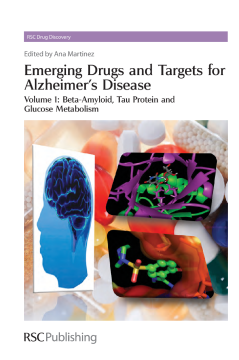
Additional Information
Book Details
Abstract
Alzheimer's disease is the most prevalent neurodegenerative disorder in the elderly. A recent study from the Bloomberg School of Public Health recently estimated that over 26 million people were living with the disease in 2006 and that the global prevalence of the disease will grow to 106 million by 2050. By that time, 43 per cent of those living with the disease will need high-level care, equivalent to that of a nursing home. However, even if modest advances in preventing or delaying the disease's progression were made, it could have a huge impact on global public health. According to this study, interventions that could delay the onset of the disease by as little as one year would reduce the prevalence of the disease by 12 million fewer cases in 2050. These figures reinforce how important it is to find an effective intervention for Alzheimer's disease.
Emerging Drugs and Targets for Alzheimer's Disease collects some of the most outstanding examples of new drugs currently under pharmaceutical development or new targets in the validation process that will reach the Alzheimer's drug market over the next few years as disease modifying drugs. Written by a team of distinguished experts Volume 1: Beta-Amyloid, Tau Protein and Glucose Metabolism is an essential resource for scientists in the pharmaceutical and biotechnology industries and academics working in the neurosciences field.
Ana Martinez obtained her PhD in Organic Chemistry from the Complutense University of Madrid before becoming a researcher at the Medicinal Chemistry Institute of the Spanish National Council for Research (CSIC). Since 1995, her interests have focused on neurodegenerative disorders and she has led numerous research projects on the medicinal chemistry and rational drug design with the aim of finding new treatments for Alzheimer's disease. In February 2002, she joined NeuroPharma (now NOSCIRA) as R&D Director where she led projects from the discovery of potential new therapies to the final proof of concept in animal models. In February 2008, she returned to her academic position at the Medicinal Chemistry Institute (CSIC) leading several projects on neurodegenerative disease therapies and acting as an external scientific advisor to a number of pharmaceutical companies. Her main areas of research currently involve GSK-3 inhibitors and dual binding site acetylcholinesterase inhibitors. She has authored over a hundred and fifty scientific publications and has more than twenty active patents in the field.
